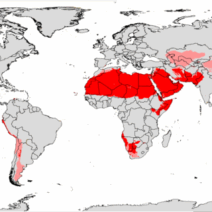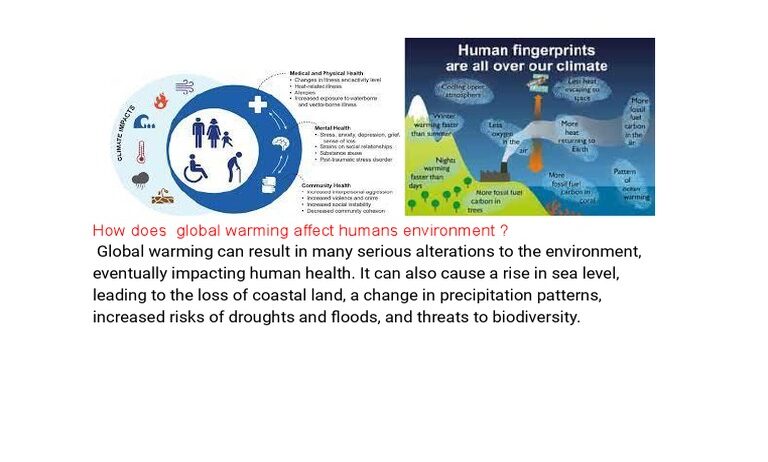Human population growth is akin to a vibrant, ever-expanding tapestry woven into the fabric of our planet. Each thread represents an individual, adding complexity and color, yet also potentially tearing at the seams of our environment. As the world’s population burgeons and approaches the 8 billion mark, the intricate interplay between this growth and global warming becomes increasingly evident. Understanding the dynamics of how a rising populace influences climate change is central to addressing the pressing challenges posed by both environmental degradation and the demand for resources.
At the core of this discussion lies the undeniable truth: more people means greater consumption. As individuals, we partake in activities that require energy—from the appliances that illuminate our homes to the vehicles that transport us. Each person contributes to the collective demand for energy, predominantly drawn from fossil fuels, which subsequently emits greenhouse gases into the atmosphere. This confluence of human activity acts as a magnifying glass, amplifying the effects of climate change. The acceleration of global warming is not a distant abstraction; it is a direct outcome of our actions and choices etched into the narrative of humanity.
To fathom the magnitude of the situation, consider the phenomenon of urbanization. Cities, as epicenters of population growth, burgeon at an astonishing rate. By 2050, it is estimated that nearly 68% of the global populace will reside in urban areas. This massive migration to urban locales—like bees drawn to a flowering garden—fuels both innovation and, paradoxically, environmental stress. Urban centers are voracious consumers of resources, acting as a vessel that transports rural populations into energy-hungry ecosystems. This influx strains local infrastructure, invariably leading to an increase in carbon emissions as cities scramble to meet the needs of their burgeoning inhabitants.
The impact of population growth further reverberates through agriculture, where an expanding population heightens the demand for food production. As such, agricultural practices become entwined with the cycle of climate change. Intensive farming methods that prioritize yield over sustainability necessitate expansive land use, which often entails deforestation—an irrevocable loss that not only releases carbon dioxide but also diminishes nature’s ability to absorb this greenhouse gas. The metaphor of the Earth as a delicate greenhouse is increasingly poignant; each tree felled is another breath of fresh air taken away, making the greenhouse effect all the more pronounced.
Moreover, high population density correlates with increased waste generation. The sheer volume of refuse—organic, plastic, electronic—contributes significantly to methane emissions, a potent greenhouse gas. As landfills overflow and incineration becomes commonplace, the cycle of waste perpetuates an ever-thickening shroud of greenhouse gases enveloping the planet. This anthropogenic cloud obscures sunlight, resulting in erratic weather patterns—a cruel irony, as humanity’s quest for more leads to the very conditions that threaten survival.
The relationship between population growth and global warming is also palpably evident in the developing world, where rapidly growing populations often rely on unsustainable energy sources. In many cases, populations seeking to burgeon out of poverty resort to burning biomass or fossil fuels. These practices, born from necessity rather than indulgence, create a paradox where those most affected by climate change are ironically those contributing least to its onset. Consequently, climate justice becomes an essential aspect of the dialogue regarding population growth and its environmental ramifications.
In the chase for solutions, it is paramount to assess the concept of sustainable development. The fabric of sustainability is woven with threads of education, innovation, and responsible resource management. Education, particularly in matters of reproductive health and family planning, plays a pivotal role in moderating population growth rates. By empowering individuals, especially women, to make informed choices about family size, societies can mitigate strain on resources while maintaining cultural and social integrity. This investment in human capital becomes a crucial element in the fight against climate change, creating a population that is not just larger but also more conscious and sustainable.
Moreover, technological innovation presents an avenue to balance population growth with environmental preservation. Advances in renewable energy—such as solar, wind, and hydroelectric power—can serve as catalysts for reducing dependency on fossil fuels. Transitioning to these sustainable energy sources does not merely address energy consumption; it also mitigates the harmful emissions driving climate change. By harnessing the ingenuity of humanity, we can alter the trajectory of global warming, ensuring that the tapestry of human existence is enriched rather than frayed.
Ultimately, acknowledging the profound impact of population growth on global warming is imperative. While the allure of a burgeoning population may seem benign—evident in the vibrancy of cultures and communities—the environmental implications are profound and far-reaching. Every individual is a note in the symphony of climate change; together, we can compose a harmonious balance between growth and sustainability. As stewards of the Earth, it is our collective responsibility to weave a narrative that champions the health of our planet alongside human progress. Each decision, each action, ripples outward—shaping the earth we inhabit for generations to come.






